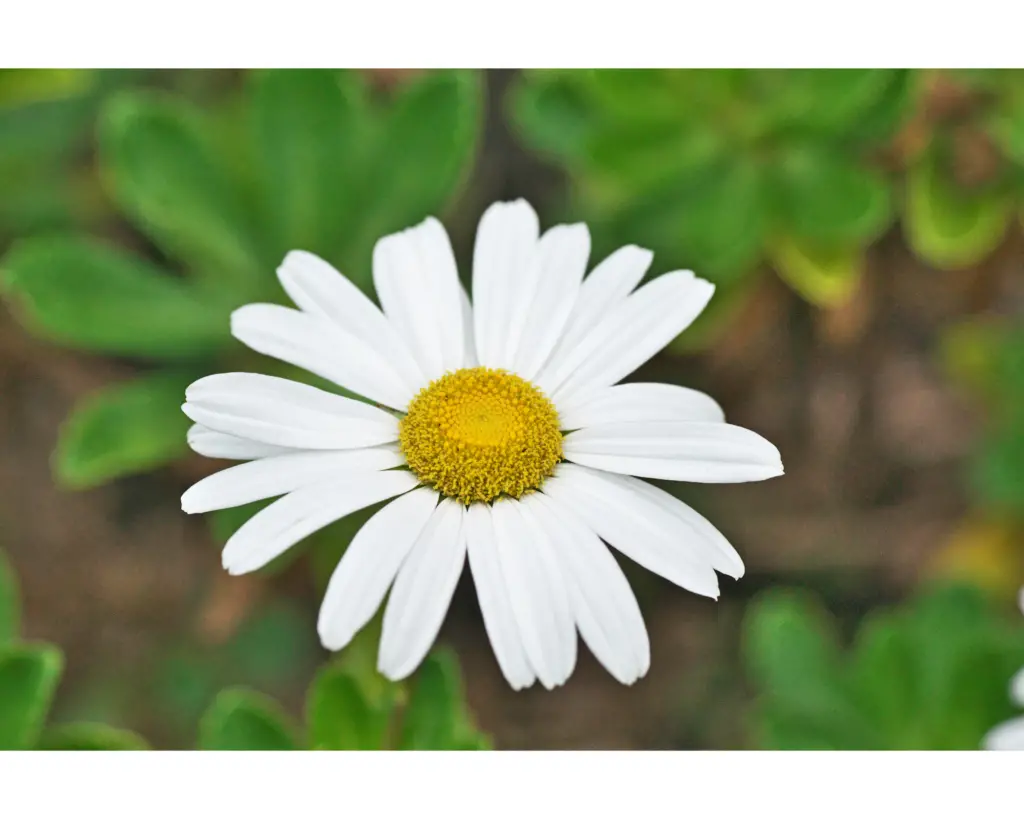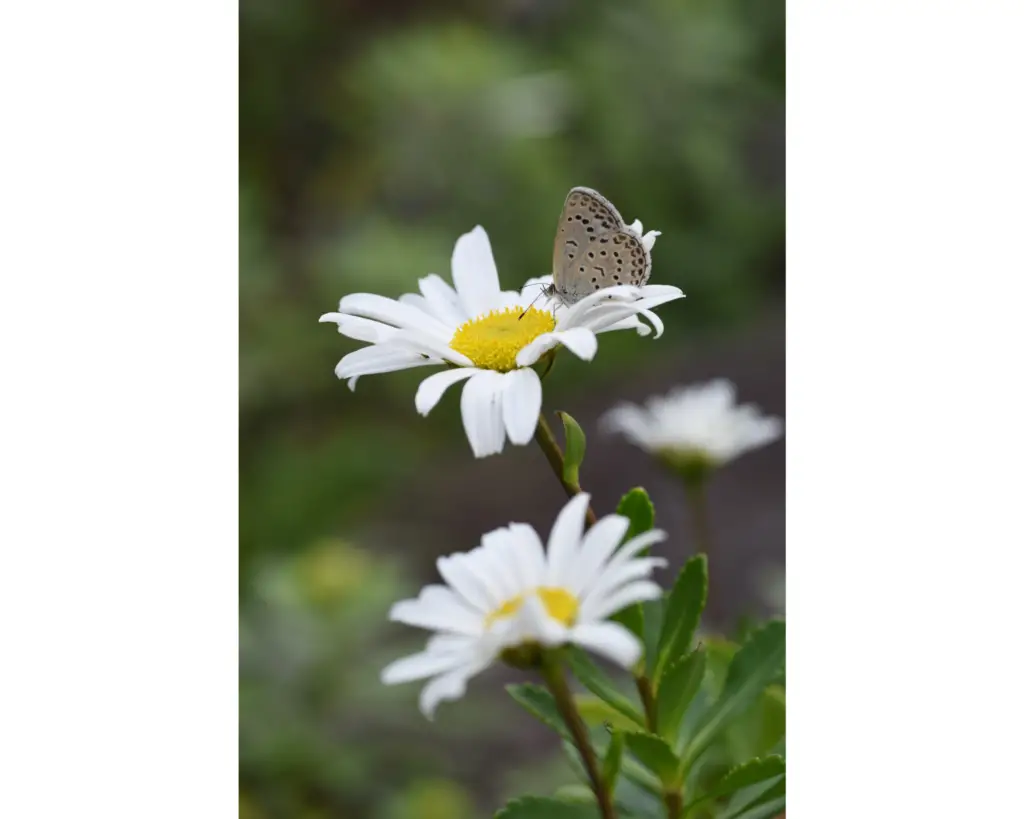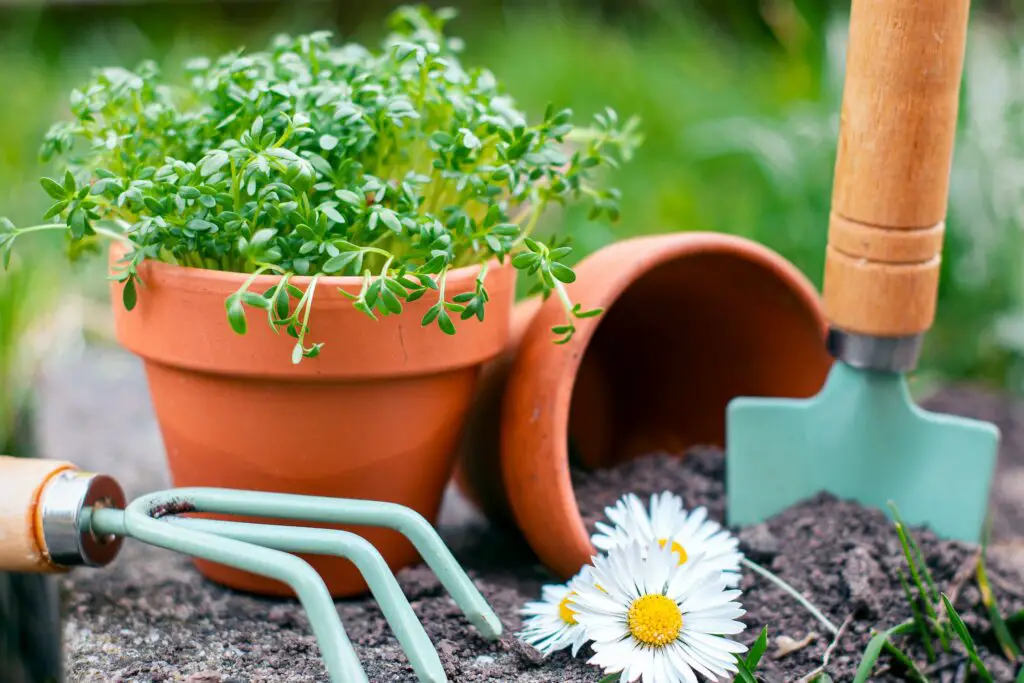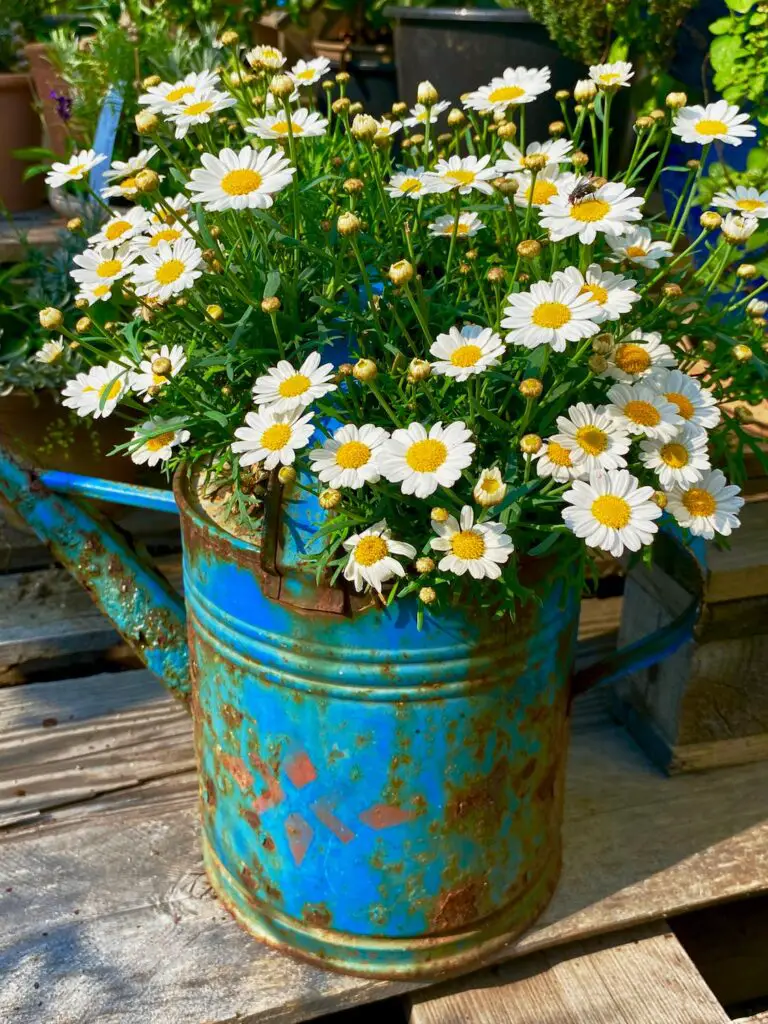The Montauk daisy (Nipponanthemum nipponicum) is a beautiful perennial plant that belongs to the aster family. It is native to Japan and is also known as Nippon daisy. These plants are are widely grown as an ornamental plants in gardens because of their large blooms. But did you know that Montauk daisy can also be grown as a houseplant?
In this article, we will explore the characteristics of Montauk daisies, and provide you with tips on how to care for this beautiful plant as a houseplant.
Table of Contents
Characteristics
The Montauk daisy is a herbaceous perennial plant that grows up to 2-3 feet tall and 2-3 feet wide (under 1 metre long and wide). It has a bushy growth habit with dark green, leathery leaves that are about 2-3 inches long (5-7 centimetres) and 1 inch (2.5 centimetres) wide. The leaves are lance-shaped with serrated edges and have a slightly fuzzy texture.
The plant blooms in late summer to fall (autumn), producing large, daisy-like flowers that are about 2-3 inches (5-7 centimetres) in diameter. The flowers have white petals with yellow centers and are borne on long, sturdy stems that rise above the foliage. Montauk daisy flowers attract bees, butterflies, and other beneficial insects, making it a great addition to any garden or home.


Growing requirements for Montauk Daisy as a houseplant
Montauk daisy is a hardy plant that can grow in a wide range of conditions. When grown as a houseplant, provide the plant with the right growing conditions to ensure its health and well-being.
Light and Temperature
Montauk daisy requires bright, indirect sunlight to thrive. Place the plant in a bright, sunny spot in your home. Keep it away from direct sunlight as it can scorch the leaves. If your home does not have a lot of natural light, you can supplement with artificial light using grow lights. Place the grow lights about 12-18 inches above the plant and leave them on for 12-14 hours per day.
Montauk daisy prefers cool to moderate temperatures, between 50-70°F (10-21°C). These plants can tolerate higher temperatures, however avoid placing the plant in direct sunlight or near heat sources such as radiators or vents. In winter, keep the plant away from cold drafts, and ensure that the temperature does not drop below 50°F (10°C).
Humidity and Soil
Montauk daisy prefers moderate humidity levels between 40-60%. If you have low humidity in your home, you can increase humidity by placing a tray of water near the plant or by using a humidifier. The Montauk daisy prefers well-draining, fertile soil. Use a potting mix made for flowering plants or make your own by combining equal parts of peat moss, perlite, and vermiculite. Make sure the potting mix is moist but not waterlogged as Montauk daisy is susceptible to root rot.
Watering and Fertilisation
Montauk daisy prefers moist soil but can tolerate short periods of drought. Water thoroughly, allowing excess water to drain out of the bottom of the pot. Avoid over-watering as it can lead to root rot. Montauk daisies are heavy feeders and require regular fertilisation to maintain their health and vigour.
Use a well balanced fertiliser with equal amounts of nitrogen, phosphorus, and potassium. It should be used every two weeks during the growing season. Lastly, slow-release fertiliser can also be applied once every three months. Over-fertilising can lead to excessive growth and reduced flower production, so it’s important to follow the recommended dosage and schedule.


Repotting Montauk daisies
Montauk daisies should be repotted every 2-3 years to ensure healthy growth. Choose a pot that is one size larger than the current pot, and make sure it has drainage holes. Gently remove the plant from the old pot, loosen the root ball, and remove any dead or damaged roots. Fill the new pot with fresh potting soil and place the plant in the center, making sure the top of the root ball is level with the soil surface. Water the plant thoroughly and allow excess water to drain out of the bottom of the pot. After repotting, avoid fertilising for at least two weeks to allow the plant to acclimate to its new environment.
Pollinating Montauk daisies
Montauk daisies are pollinated by bees, butterflies, and other beneficial insects. The flowers have a central disc of small, tubular florets that produce nectar and pollen, which attract pollinators. Plant Montauk daisies in an area with plenty of sunlight and a good source of nectar and pollen. Avoid using pesticides, as they can harm pollinators. By providing a healthy habitat for pollinators, you can ensure that your Montauk daisies will produce abundant and healthy flowers.
Pest management for Montauk daisies
Montauk daisies are generally healthy plants and are not prone to pest infestations. These plants can occasionally be affected by pests such as aphids, spider mites, and whiteflies. Regularly inspect the plant for signs of pests and to act quickly if any are found. Other effective methods for pest management include using insecticidal soap, neem oil, or a mixture of water and dish soap to spray the affected areas. It’s also important to avoid over-fertilizing, as this can attract pests. If pest infestations persist, use a chemical pesticide, always follow the instructions carefully and avoid harming beneficial insects such as bees and butterflies.
Conclusion
Montauk daisies can make beautiful and low-maintenance houseplants with proper care. They require bright light, well-draining soil, and regular watering to thrive. Fertilisation can occur every two weeks during the growing season. Repotting can occur every 2-3 years to maintain their health and vigour. Insects pollinate the Montauk daisies and can benefit from a healthy habitat for pollinators. Pest management is not a major concern for these plants, however regularly inspect them for signs of pests and take appropriate action if necessary. Overall, with the right care, Montauk daisies can add a bright and cheerful touch to any indoor space.

